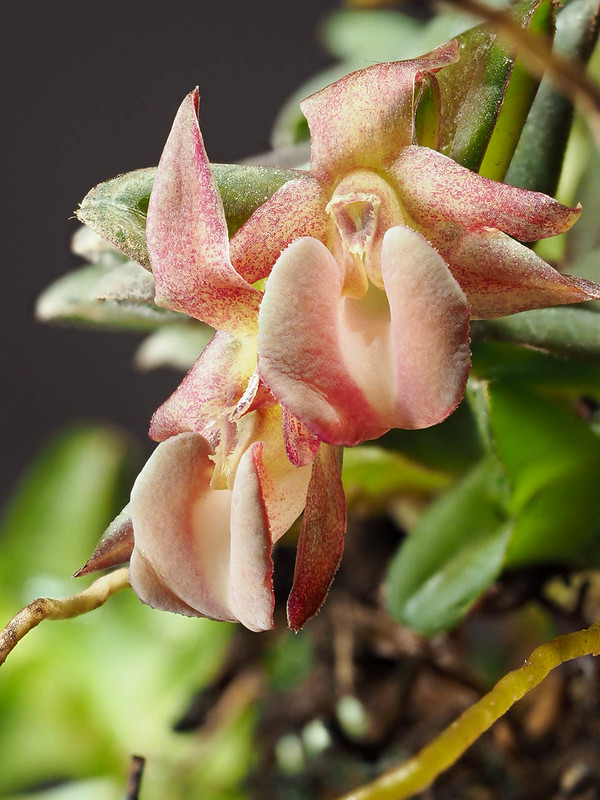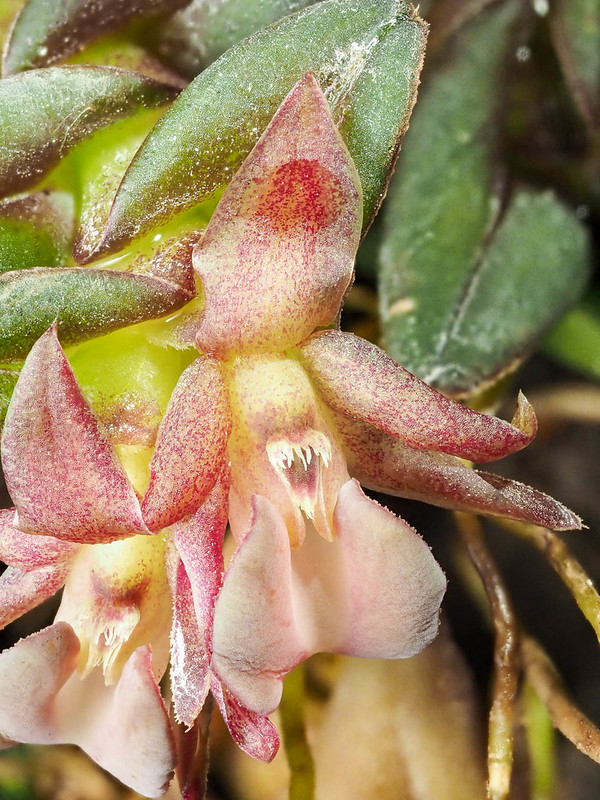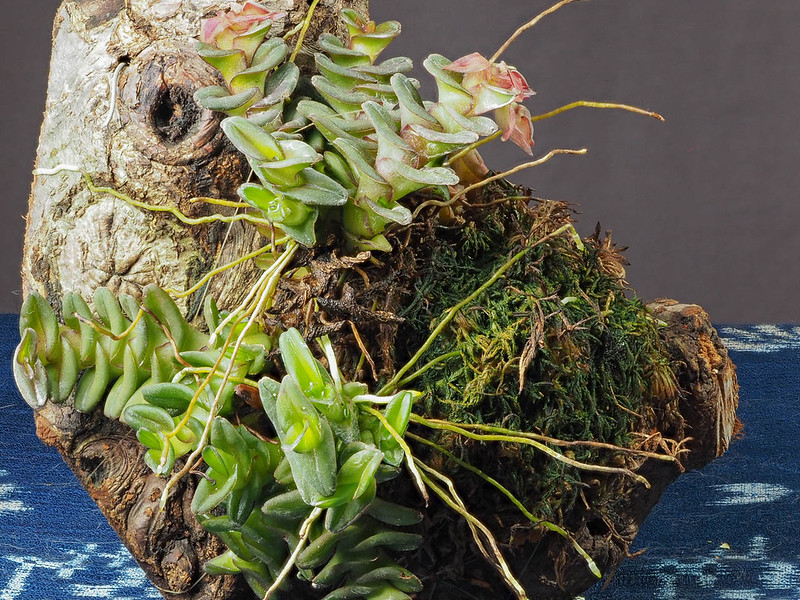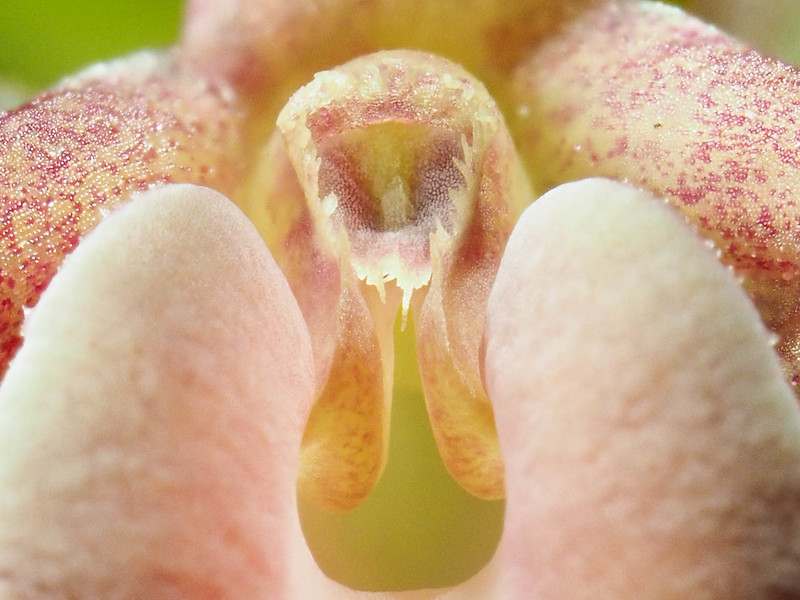
Epidendrum is a large genus with amazing diveristy. Epidendrum schizoclinandrium is in Nanodes group (link to IOSPE), which contains another cool-looking species, E. medusa. Some of the related species look somewhat similar, and Parsons and Gerritsen (2013, p. 466-469) listed 10 similar species and their geographic distributions: E. gonzalez-tamayoi (Mexico), E. serruliferum (Costa Rica, Central Panama), E. congestum (Costa Rica, Honduras), E. congestoides (Guatemala, Honduras, Nicaragua, Costa Rica), E. schlechterianum (Panama), E. oxynanodes (Colombia), E. uleinanodes (N. Brazil, Ecuador), E. longirepens (Peru), E. schizoclinandrium (Peru), and E. neodiscolor (Brazil). Some of them are warm growers and others are cool growers. I haven't looked into the differences between them, but my plant seems to resemble E. schizoclinandrium from casual comparison with the photos.
The type specimen of E. schizoclinandrium was collected in Peru, Pasco Region, Oxapampa Province, along road to Pozuzo at elevation of 1840m in Aug 25, 1978. So it was flowering in the winter. A photo of spirit-preserved holotype can be seen here (Figure 21 of Trujillo 2014). Roque and León (2013) stated (with google translateion) "Terrestrial or epiphyte herb, known from the Palcazú and Huallaga basins. There are likely to be additional populations in the Tingo María (Huánuco Region, Leoncio Prado Province), Yanachaga-Chemillén (Pasco Region, Oxapampa Province, near the type specimen) and Cordillera Azul (at the junction of Loreto, San Martín, Huánuco and Ucayali Regions) National Parks. Threats to this species are associated with deforestation for agricultural purposes."
These areas are fairly high in elevation, so the species is likely to prefer cooler temperature. Here is the link to climatic data from the nearby area. Average high temperature of 26C (80F) and low temperature of 13C (55F), with slightly lower temperature in winter.
According to IOSPE, this species is from wet montane forest of Peru at elevation of 1840m. I have been growing at the cool end of intermediate temperature. This is a recent purchase from Orquideas Amazonicas, and this is the first blooming under my care. It is a vigorous grower, and immediately took off with explosive root growths.



Here are a couple photos of a disected flower. The inside of the flower is quite interesting, especially the structure around the column and lip. It is difficult to see in the photo, but if you look at the right half of the lip, the column is fused to the lip.
 |
| The bottom (abaxial) side of the lip. Since it was cut into halves, it is showing only a half of the lip. I pressed it down slightly to flatten it. |
 |
| Column after removal of one of the side lobe. I'm not quite sure where the stigma surface is. |
 |
| Anther cap from inside (the side contacting to the pollinia) and the bottom side of the column after the pollinia and anther cap are removed. You can see the "whiskers" at the tip of the column. |
 |
| Side view of the column after the pollinia and anther cap are removed. |
 |
| Four pollinia, and anther cap (viewing from outside/bottom side). |
Parsons, R. and M. E. Gerritsen. 2013. A Compendium of Miniature Orchid Species Volume 1, Redfern Natural history Productions, Poole, Dorset, England. (link)
Roque, J. and León, B., 2013. Orchidaceae endémicas del Perú. Revista peruana de biología, 13(2), pp.759-878s. (link to abstract)
Trujillo, D., 2014. Annotated list of orchidaceae types of the Bennett collection at the forestry herbarium mol. Lankesteriana, 14(1), pp.1-88. (link)




Comments
Post a Comment